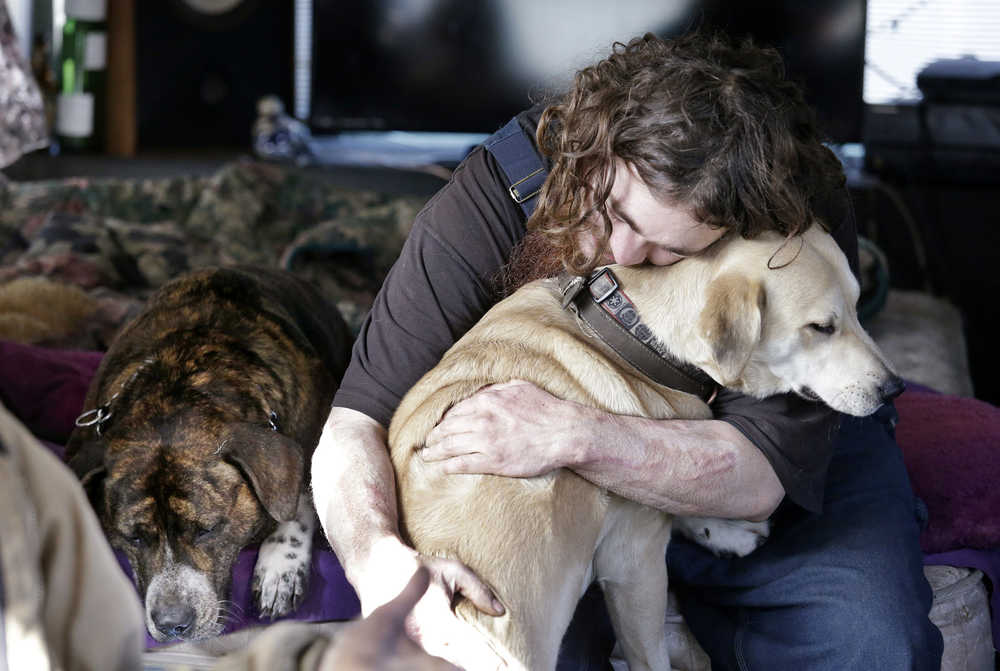SEATTLE — As homeless deaths mounted last fall in Seattle, elected officials declared an emergency, resorting to a tool often reserved for natural disasters to confront the burgeoning population of people living on the streets.
The mayor opened a new city-sanctioned homeless encampment and committed millions more dollars to expand shelter beds and social services. Then the crisis hit new heights: Three homeless boys were charged this month with killing two people at a longstanding homeless camp known as The Jungle. And a one-night census of homeless revealed a 19 percent spike, the third annual increase in as many years.
Now the mayor and the Seattle City Council are under pressure to do more, and they are taking steps to offer the homeless cleaner, safer places to stay. This week, the city plans to open two parking lots where people living in RVs and cars can park overnight with access to toilets, garbage and social services. Officials are also planning a third tent community.
Seattle’s struggle to respond illustrates how challenging the homeless problem is, particularly in one of the fastest-growing U.S. cities. The area is simultaneously dealing with skyrocketing rents, a heroin epidemic and declining federal housing support. Like many other population centers, it also has a lack of mental health services and drug-treatment programs.
“We present a perfect storm,” said Sara Rankin, a professor who directs the Homeless Rights Advocacy Project at the Seattle University School of Law. “We have all the pressures that are likely to cause the circumstances where poverty and homelessness can thrive.”
Even as homelessness declined slightly nationwide in 2015, it increased in urban areas, including Seattle, New York and Los Angeles. In King County, which includes Seattle, there were 91 presumed homeless deaths last year, compared with 64 in 2014, according to authorities.
Meanwhile, median household income and rents have soared. The median rent in Seattle in December was $1,931 a month, compared with a national average of $1,381, according to Zillow. The city of about 670,000 is expected to gain more residents and 115,000 new jobs over the next 20 years as Amazon, Facebook, Google and other tech giants open offices.
The Seattle area now ranks third in the nation in the number of housing units for the homeless. But it also has the third-highest number of homeless people.
After the Jan. 26 shooting, Mayor Ed Murray again pleaded with the state and federal government to help the city ease the homeless crisis.
“The causes of homeless are complex. There is no simple answer,” he said. The brothers have pleaded not guilty to murder charges.
Over the last three decades, homelessness has been costly to taxpayers. Seattle voters have agreed to tax themselves four separate times since 1986 to pay for affordable housing. The mayor recently proposed raising another $290 million with another housing levy on the November ballot.
Ten years ago, a coalition of leaders came up with a plan to end homelessness by 2015. In that time, the city and county built more than 6,300 housing units and helped nearly 40,000 people find homes.
Yet the number of homeless people has continued to climb.
“Despite being able to serve more people each year, we’re seeing more people come behind them,” said Mark Putnam, executive director of All Home, a community-wide partnership in King County formerly known as the Committee to End Homelessness.
Previous efforts failed to address underlying problems that are making people homeless, including income inequality, said homeless advocate Timothy Harris.
“The last 10-year plan focused on housing first to the exclusion of interim survival solutions, such as tent encampments and emergency shelter,” said Harris, founding director of Real Change, the homeless-advocacy group and newspaper.
Murray acknowledges that city-sanctioned parking lots are not long-term solutions. But, he said, they can “provide a safer environment” and reduce the effect on neighborhoods.
Some advocates reject that thinking. The U.S. Interagency Council on Homelessness says encampments distract from the key goal of getting people to permanent housing.
“There’s nothing good about people living outdoors,” said Steve Berg, vice president of policy and programs at the National Alliance to End Homelessness.
Some Seattle residents complain the city isn’t acting fast enough to address the crime, drug use, garbage and other problems associated with unauthorized encampments.
“We need some action,” Cindy Pierce told council members this month. She said the city has “a major health and safety problem,” including needles and human waste on the streets.
While he waits for the city’s parking lot to open, Richard Swope, a former motel manager, is parked along with about two dozen RVs, buses and cars in temporary zone.
“They told me we had to move because the neighbors were complaining, which I don’t blame them,” said Swope, 65, who is working with several local nonprofits to find housing. He lost part of one leg to peripheral arterial disease, he said, and lives on Social Security benefits.
“I can’t live in this thing,” he said, pointing to the small RV that his friend left him. “On $733 a month, there aren’t too many places you can go.”
Nearby, Danny Fletcher, 32, who lives in his car, prefers the quiet of the parking zone to the harassment he faced in other parts of the city.
“We just want a safe place. Give us a safe place to park where neighbors won’t harass us,” he said. “We’re homeless. We’re not diseased.”

